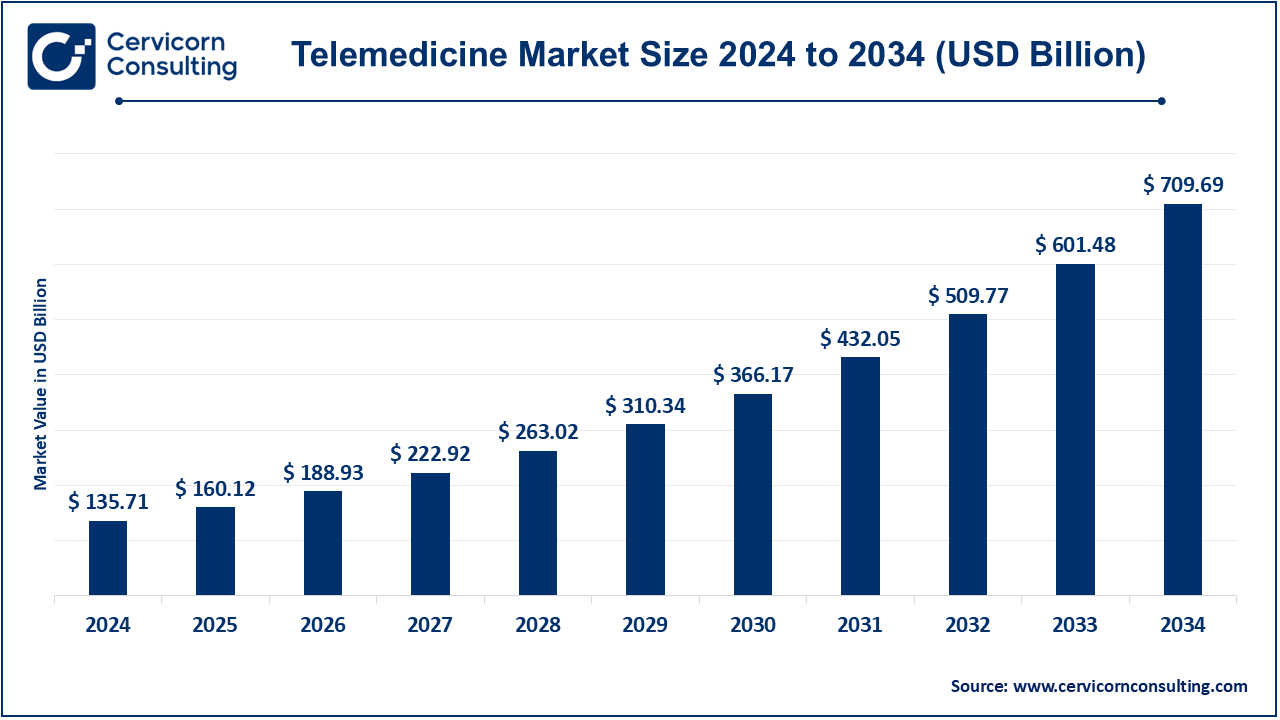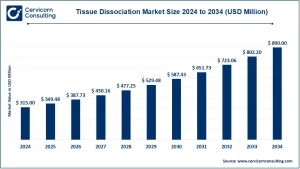Market Overview
The global telemedicine market was valued at approximately USD 135.71 billion in 2024 and is projected to exceed USD 709.69 billion by 2034, growing at a CAGR of 17.99% from 2025 to 2034. What began as a pandemic-driven solution has evolved into a vital component of modern healthcare, enabling remote consultations, diagnostics, and patient monitoring. Telemedicine adoption is particularly transformative for rural, underserved, and aging populations, enhancing access to care, improving clinical efficiency, and reducing the burden on hospitals.
📄 Get a Free Sample: https://www.cervicornconsulting.com/sample/2588
Key Market Trends
-
Virtual Care Integration: Specialties such as radiology, cardiology, mental health, and dermatology are increasingly leveraging teleconsultation and remote monitoring solutions.
-
Cloud-Based Platforms: Over 65% of telehealth services now operate on web- or cloud-based systems, providing scalability, HIPAA compliance, and cost efficiency.
-
AI and Digital Health Tools: Artificial intelligence, virtual assistants, and predictive analytics are improving workflow efficiency, diagnostic accuracy, and patient outcomes.
-
Non-Physician Provider Involvement: Nurse practitioners and physician assistants are taking on expanded roles in telehealth delivery, addressing clinician shortages.
-
Mobile and Wearable Health Integration: The rising use of mHealth apps and wearable devices allows real-time monitoring and enhances patient engagement.
Market Drivers
-
Growing Demand for Remote Care: Convenience and safety concerns are prompting patients to opt for virtual consultations. For instance, 22.5% of U.S. adults used telehealth services between April 2021 and August 2022.
-
Government Support and Policies: Expanded telehealth reimbursements and relaxed licensing regulations in countries such as the U.S. are driving adoption.
-
Technological Advancements: High-speed internet, 5G networks, AI integration, and IoMT (Internet of Medical Things) enhance the effectiveness and reach of telemedicine.
-
Rising Chronic Disease Prevalence: Increasing cases of diabetes, cardiovascular diseases, and mental health disorders demand continuous remote monitoring.
-
Cost Efficiency: Telemedicine reduces operational costs and minimizes in-person visits, benefiting both healthcare providers and patients.
Impact of Trends and Drivers
-
By Region: North America led in 2024 with a 33.4% revenue share, followed by Europe at 29.81%. Asia-Pacific is experiencing rapid growth due to digital health initiatives.
-
By Application: Mental health and chronic disease management are witnessing the highest telehealth adoption, with over 55% of outpatient mental health visits conducted virtually in 2023.
-
By Facility: Tele-hospitals accounted for the highest revenue share in 2024, driven by integrated hospital systems adopting telemedicine.
-
By Delivery Mode: Web and mobile platforms dominate, offering accessibility, scalability, and user-friendly interfaces.
Challenges & Opportunities
-
Challenges: Regulatory inconsistencies, data privacy concerns, and limited digital literacy in rural areas remain key barriers.
-
Opportunities: Cross-border telemedicine, AI-driven diagnostics, and integration with wearable devices provide significant growth potential.
Future Outlook
The telemedicine market is expected to maintain strong growth, propelled by AI integration, expansion of cloud-based solutions, and increasing acceptance among patients and healthcare providers. By 2034, telemedicine is poised for widespread adoption, driven by technological innovation, supportive policies, and the growing need for cost-effective, accessible healthcare solutions.
🔍 For a detailed market overview, visit: Cervicorn Consulting

